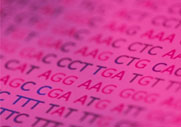High Throughput Technologies


About High Throughput Technologies
Recent advances in high-speed computing and robotics has made it possible for researchers to perform fast, automated analyses of large numbers of substances including DNA, RNA, proteins, and other types of molecules and chemical compounds. These “high throughput” analyses are being used in many areas of biomedical research including genetics and drug discovery.
How is NIH Common Fund ARRA funding advancing the development and use of high throughput screening approaches in biomedical research?
NIH Common Fund ARRA funding is supporting several research projects that are using high throughput technologies. These projects aim to further our understanding of processes underlying several prevalent diseases, create new tools for disease detection and diagnosis, and develop new treatments
| Researcher | Research Description |
|---|---|
| Dr. David Armand Fidock Columbia University Health Sciences |
Dr. David Armand Fidock and colleagues are developing a high-throughput assay to screen chemical libraries for compounds that inhibit the development of a structure called the apicoplast in Plasmodium falciparum – the parasite that causes severe malaria. The researchers intend to identify new inhibitors that can be used to understand apicoplast biology and that have potential for the development of new therapeutics (3R21NS059500-01S2). This project is managed by the National Institute on Neurological Disorders and Stroke (NIJNDS). |
| Dr. Martin Kharrazi Sequoia Foundation |
Dr. Martin Kharrazi and colleagues are creating an efficient, high- throughput, and low-cost prenatal and newborn biobank containing specimens spanning 28 years that will be linked to existing records of fetal death, live birth, death, and prenatal and newborn screening to develop a rich, client-based, cross-generational, life- course database (1RC2HD065514-01). This project is managed by the National Institute of Child Health and Human Development (NICHD). |
| Dr. Or P. Gozani Stanford University |
Dr. Or P. Gozani and colleagues are developing novel protein array technologies to enable high-throughput discovery of the proteins that place and read modifications to DNA packing proteins. These modifications influence diverse cellular functions, and creating new technologies that allow for rapid and accurate discovery of modification “readers” should be valuable in defining how these modification events influence human health and disease (3R21DA025800-01S1). This project is managed by the National Institute on Drug Abuse (NIDA). |
| Dr. Julie Sutcliffe University Of California Davis |
Dr. Julie Sutcliffe and colleagues are using high-throughput technologies to streamline the selection, synthesis, and evaluation of molecular imaging markers that will improve the detection, diagnosis, staging, monitoring, and treatment of many diseases (1RC4EB012836-01). This project is managed by the National Institute of Biomedical Imaging and Bioengineering (NIBIB). |
| Dr. Leor S. Weinberger University Of California San Diego |
Dr. Leor S. Weinberger and colleagues are using single-cell imaging methods to conduct high-throughput screens for candidate Therapeutic Infectious Pseudoviruses (TIPs) that can force viruses, such as HIV-1, into a dormant state. This innovative strategy may result in the development of a revolutionary therapy with the potential to halt the spread of HIV/AIDS and other infectious diseases. |
| Dr. David Weir University Of Michigan At Ann Arbor |
Dr. David Weir and colleagues are using high-throughput genetic technologies to expand the Health and Retirement Study database (constructed under an earlier ARRA project) which provides genetic and behavioral data from older Americans. This project will also create mechanisms by which qualified researchers anywhere in the country can access the data for analysis of health and behavior in the older population (1RC4AG039029-01). Project is being managed by the National Institute on Aging (NIA). |


